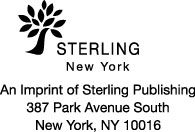 STERLING EPICURE and the distinctive Sterling logo are registered trademarks of Sterling Publishing Co., Inc. 2012 by Kevin Zraly All rights reserved. No part of this publication may be reproduced, stored in a retrieval system, or transmitted, in any form or by any means, electronic, mechanical, photocopying, recording, or otherwise, without prior written permission from the publisher. ISBN 978-1-4549-0540-0 First edition www.sterlingpublishing.com THE BASICS
STERLING EPICURE and the distinctive Sterling logo are registered trademarks of Sterling Publishing Co., Inc. 2012 by Kevin Zraly All rights reserved. No part of this publication may be reproduced, stored in a retrieval system, or transmitted, in any form or by any means, electronic, mechanical, photocopying, recording, or otherwise, without prior written permission from the publisher. ISBN 978-1-4549-0540-0 First edition www.sterlingpublishing.com THE BASICS
Youre in a wine shop looking for that special wine to serve at a dinner party. Before you walked in, you had at least an idea of what you wanted, but now, as you scan the shelves, youre overwhelmed. There are so many wines, you think, and so many prices.
You take a deep breath, boldly pick up a bottle that looks impressive, and buy it. Then you hope your guests will like your selection. Does this sound a little farfetched? For some of you, yes. Yet the truth is, this is a very common occurrence for the wine beginner, and even someone with intermediate wine knowledge, but it doesnt have to be that way. Wine should be an enjoyable experience. By the time you finish this, youll be able to buy with confidence from a retailer or even look in the eyes of a wine steward and ask with no hesitation for the selection of your choice.
But first lets start with the basicsthe foundation of your wine knowledge.
For the purpose of this book, wine is the fermented juice of grapes.
How Wine Is Made Whats fermentation? Fermentation is the process by which the grape juice turns into wine. The simple formula for fermentation is: Sugar + Yeast = Alcohol + Carbon Dioxide (CO) The fermentation process begins when the grapes are crushed and ends when all of the sugar has been converted to alcohol or the alcohol level has reached around 15.5 percent, the point at which the alcohol kills off the yeast. Sugar is naturally present in the ripe grape. Yeast also occurs naturally as the white bloom on the grape skin. However, this natural yeast is not always used in todays winemaking. Laboratory strains of pure yeast have been isolated and may be used in many situations, each strain contributing something unique to the style of the wine.
The carbon dioxide dissipates into the air, except in Champagne and other sparkling wines, in which this gas is retained through a special process.
What are the three major types of wine? Table wine: approximately 8 to 15 percent alcohol
Sparkling wine: approximately 8 to 12 percent alcohol + CO2
Fortified wine: 17 to 22 percent alcohol All wine fits into at least one of these categories.
Why do the worlds fine wines come only from certain areas? A combination of factors is at work. The areas with a reputation for fine wines have the right soil and favorable weather conditions, of course. In addition, these areas look at winemaking as an important part of their history and culture.
Is all wine made from the same kind of grape? No. The major wine grapes come from the species Vitis vinifera . In fact, European, North American, Australian, and South American winemakers use the Vitis vinifera, which includes many different varieties of grapesboth red and white. However, there are other grapes used for winemaking.
The most important native grape species in America is Vitis labrusca , which is grown widely in New York State as well as other East Coast and Midwest states. Hybrids, which are also used in modern winemaking, are a cross between Vitis vinifera and Vitis labrusca . Major White Grapes of the World ONE OF THE MOST FREQUENTLY ASKED QUESTIONS by my wine students is, What will help most in learning about wine? The main thing is to understand the major grape varieties and where they are grown in the world. I dont want to overwhelm you with information about every grape under the sun. My job as a wine educator is to try to narrow down this overabundance of data. So lets start off with the three major grapes you need to know to understand white wine.
More than 90 percent of all quality white wine is made from these three grapes. They are listed here in order from the lightest style to the fullest: Riesling Sauvignon Blanc Chardonnay This is not to say that world-class white wine comes from only these grapes, but knowing these three is a good start. One of the first things I show my students is a list indicating where these three grape varieties grow best. It looks something like this:
| GRAPES | WHERE THEY GROW BEST |
|---|
| Riesling | Germany; Alsace, France; New York State; Washington State |
| Sauvignon Blanc | Bordeaux, France; Loire Valley, France; New Zealand; California (Fum Blanc) |
| Chardonnay | Burgundy, France; Champagne, France; California; Australia |
There are world-class Rieslings, Sauvignon Blancs, and Chardonnays made in other countries, but in general the above regions specialize in wines made from these grapes.
| COMMON AROMAS |
|---|
| Riesling | Sauvignon Blanc | Chardonnay |
| Fruity | Grapefruit | Green apple, Butter, Citrus |
| Lychee nut | Grass, Herbs | Grapefruit, Melon, Oak |
| Sweet | Cat pee, Green olive | Pineapple, Toast, Vanilla |
Major Red Grapes of the World AS YOU BEGIN YOUR WINE JOURNEY, you should understand the major red grape varieties and where in the world they produce the best wines. Lets start with a list of what I consider to be the major red-wine grapes, ranked from lightest to fullest-bodied style, along with the region or country in which the grape grows best.
By looking at these charts, not only will you get an idea of the style of the wine, but also a feeling for gradations of weight, color, tannin, and ageability.
| GRAPES | WHERE THEY GROW BEST | COLOR LEVEL |
|---|
| Low |
| Gamay | Beaujolais, France |  |
| Pinot Noir | Burgundy, France; Champagne, France; California; Oregon |
| Tempranillo | Rioja, Spain |
| Sangiovese | Tuscany, Italy |
| Merlot | Bordeaux, France; Napa, California; |
| Zinfandel | California |
| Cabernet Sauvignon | Bordeaux, France; Napa, California; Chile |
| Nebbiolo | Piedmont, Italy |
| Syrah/Shiraz | Rhne Valley, France; Australia; California |
| Deeper |
| GRAPES | AGEABILITY |
|---|
| Drink Young |
| Gamay |  |
| Pinot Noir |
| Tempranillo |
| Sangiovese |
| Merlot |
| Zinfandel |
| Cabernet Sauvignon |
| Nebbiolo |
| Syrah/Shiraz |
| Wine to Age |
| TEXTURE | GRAPES | TANNIN LEVEL |
| Light | Low |
 | Gamay |
| Pinot Noir |
| Tempranillo |
| Sangiovese |
| Merlot |
| Zinfandel |
| Cabernet Sauvignon |
| Nebbiolo |
Next page

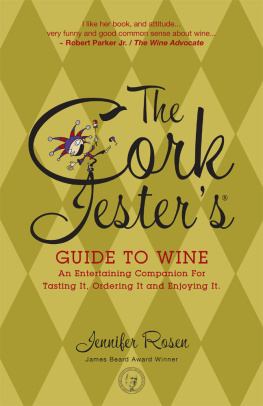

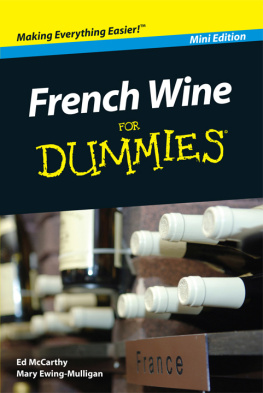
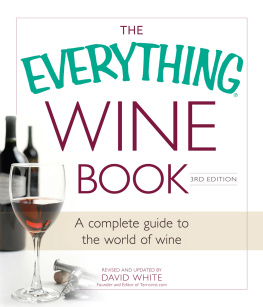

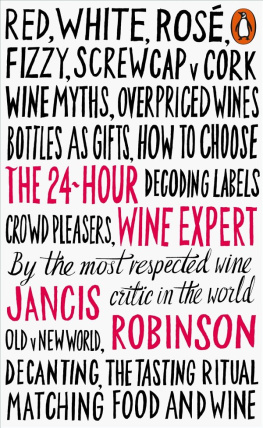
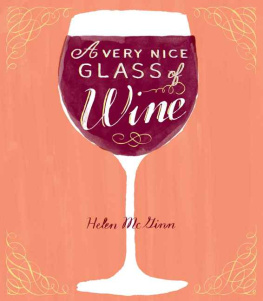
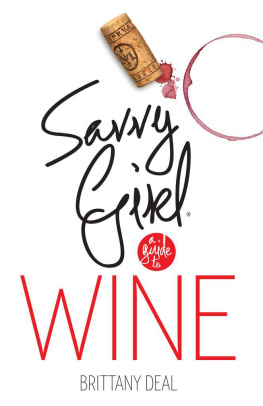


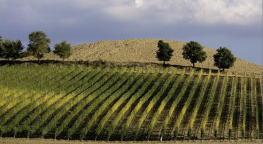

 STERLING EPICURE and the distinctive Sterling logo are registered trademarks of Sterling Publishing Co., Inc. 2012 by Kevin Zraly All rights reserved. No part of this publication may be reproduced, stored in a retrieval system, or transmitted, in any form or by any means, electronic, mechanical, photocopying, recording, or otherwise, without prior written permission from the publisher. ISBN 978-1-4549-0540-0 First edition www.sterlingpublishing.com THE BASICS
STERLING EPICURE and the distinctive Sterling logo are registered trademarks of Sterling Publishing Co., Inc. 2012 by Kevin Zraly All rights reserved. No part of this publication may be reproduced, stored in a retrieval system, or transmitted, in any form or by any means, electronic, mechanical, photocopying, recording, or otherwise, without prior written permission from the publisher. ISBN 978-1-4549-0540-0 First edition www.sterlingpublishing.com THE BASICS